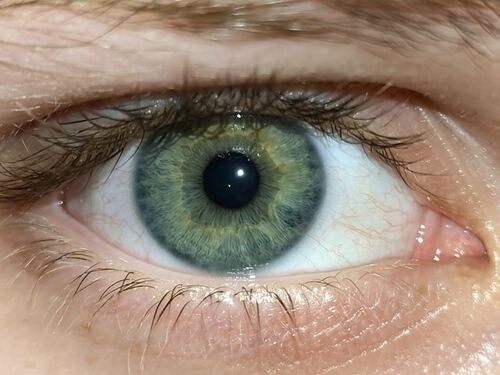Hamburg’s vibrant digital landscape mirrors the city’s maritime heritage – both vast, interconnected, and demanding careful navigation. As Germany’s media capital and home to countless tech startups, Hamburg residents spend more time than ever staring at screens, from planning canal tours on smartphones to working late nights in the HafenCity’s glass towers. But this digital immersion comes with an unexpected cost that many locals are only beginning to recognize: digital eye strain.
Understanding Digital Eye Strain in the Modern World
Digital eye strain, also known as computer vision syndrome, has become increasingly prevalent as our daily lives revolve around screens. The condition encompasses a range of symptoms including dry eyes, blurred vision, headaches, neck pain, and general eye discomfort that develops after prolonged screen use.
The human eye wasn’t designed for the constant focus shifts and blue light exposure that characterize modern digital device usage. When we look at screens, we blink less frequently – typically about one-third as often as normal – leading to dry, irritated eyes. Additionally, the high-energy visible (HEV) blue light emitted by digital devices can penetrate deep into the eye, potentially causing long-term damage to retinal cells.
Research indicates that the average person spends over seven hours daily looking at screens, with many Hamburg professionals exceeding this average due to the city’s thriving media and tech industries. This prolonged exposure creates a perfect storm for eye strain symptoms that can significantly impact quality of life.
The Science Behind Screen-Related Eye Problems
The mechanics of digital eye strain involve several physiological processes. When focusing on screens, the ciliary muscles in our eyes work overtime to maintain clear vision at close distances. This constant accommodation, combined with the convergence required to look at near objects, creates muscular fatigue similar to holding a heavy weight for extended periods.
Blue light exposure adds another layer of complexity. While blue light naturally occurs in sunlight and helps regulate circadian rhythms, the concentrated blue light from screens can overwhelm our natural defenses. The eye’s natural filters – the cornea and lens – block most UV radiation but allow blue light to pass through to the retina.
Studies have shown that prolonged blue light exposure may contribute to digital eye strain symptoms and could potentially accelerate age-related macular degeneration. The retina’s photoreceptor cells are particularly vulnerable to oxidative damage from high-energy light wavelengths.
Recognizing the Symptoms in Your Daily Life
Digital eye strain manifests through various symptoms that many people initially dismiss as general fatigue or stress. The most common indicators include:
Visual symptoms often appear first – blurred vision, difficulty focusing, and seeing double after screen use. These symptoms typically worsen throughout the day and may persist even after stopping screen activities.
Physical discomfort frequently accompanies visual symptoms. Headaches, particularly around the temples and forehead, are common complaints. Neck and shoulder pain often develop from poor posture while using devices, creating a cascade of musculoskeletal problems.
Dry eye symptoms represent another significant category. Eyes may feel gritty, burning, or excessively watery as the tear film becomes unstable due to reduced blinking. Some people experience increased light sensitivity or see halos around light sources.
Cognitive effects shouldn’t be overlooked. Many individuals report difficulty concentrating, increased irritability, and general fatigue that seems disproportionate to their actual workload.
The Hamburg Lifestyle and Screen Exposure
Hamburg’s unique position as a media hub creates specific challenges for eye health. The city hosts major publishing houses, advertising agencies, and digital media companies, meaning many residents work in screen-intensive environments. The long winter months, with limited daylight hours, often increase indoor screen time as people seek entertainment and connection through digital means.
The city’s excellent public transportation system, while environmentally friendly, also contributes to increased screen time as commuters use smartphones and tablets during their journeys. Evening entertainment often involves streaming services or gaming, particularly during Hamburg’s famously rainy weather.
For those experiencing persistent eye discomfort, it’s worth noting that you can find a CustomEyes eye doctor near you in Chicago for comprehensive eye examinations, though Hamburg residents have excellent local healthcare options as well.
Prevention Strategies That Actually Work
Implementing effective prevention strategies requires understanding both the causes of digital eye strain and practical solutions that fit into busy lifestyles.
The 20-20-20 rule remains the gold standard for prevention. Every 20 minutes, look at something 20 feet away for at least 20 seconds. This simple practice allows the focusing muscles to relax and helps restore natural blinking patterns.
Proper screen positioning significantly impacts eye comfort. Position screens 20-26 inches from your eyes, with the top of the screen at or slightly below eye level. This positioning reduces neck strain and allows for a natural, slightly downward gaze that promotes better tear distribution.
Lighting optimization involves both ambient and screen lighting. Avoid using devices in completely dark rooms, as the contrast between the bright screen and dark surroundings increases eye strain. Similarly, minimize glare by positioning screens perpendicular to windows and using adjustable blinds or curtains.
Blue light management can be achieved through various methods. Many devices now include built-in blue light filters or “night mode” settings that reduce blue light emission during evening hours. Blue light filtering glasses have gained popularity, though scientific evidence for their effectiveness remains mixed.
Environmental and Lifestyle Modifications
Creating an eye-friendly environment extends beyond screen positioning and lighting. Humidity levels significantly impact eye comfort, particularly during Hamburg’s dry winter months when indoor heating reduces air moisture. Using a humidifier or placing water containers near heating sources can help maintain optimal humidity levels.
Regular exercise and adequate sleep support overall eye health by promoting proper circulation and allowing eyes to rest and recover. The stress reduction benefits of exercise also help minimize tension-related symptoms like headaches and neck pain.
Nutrition plays an underappreciated role in eye health. Foods rich in omega-3 fatty acids, lutein, and zeaxanthin support retinal health and may help protect against blue light damage. Hamburg’s excellent seafood, available fresh from the North Sea, provides abundant omega-3 sources.
When to Seek Professional Help
While many digital eye strain symptoms can be managed with lifestyle modifications, certain signs warrant professional attention. Persistent symptoms that don’t improve with rest, sudden changes in vision, severe headaches, or symptoms that interfere with daily activities should be evaluated by an eye care professional.
Comprehensive eye examinations can identify underlying conditions that may exacerbate digital eye strain symptoms. Uncorrected refractive errors, dry eye disease, and binocular vision problems can all contribute to screen-related discomfort.
The Future of Digital Eye Health
As technology continues evolving, so do solutions for digital eye strain. Emerging display technologies promise reduced blue light emission and improved viewing comfort. Artificial intelligence is being integrated into devices to monitor usage patterns and provide personalized break reminders.
However, the most effective approach remains proactive prevention through awareness, proper habits, and regular eye care. By understanding the connection between our digital lives and eye health, Hamburg residents can continue enjoying the city’s technological advantages while protecting their vision for years to come.
The key lies in finding balance – embracing Hamburg’s digital opportunities while respecting our eyes’ biological limitations. Through mindful screen use and proper eye care, we can navigate both the digital landscape and Hamburg’s beautiful canals with clear, comfortable vision.



